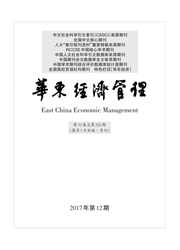

 中文摘要:
中文摘要:
资本和劳动是推动经济增长的根本动力。文章运用ESDA方法剖析山东省140个县域单元经济及投入要素的时空演变规律,并进一步构建GWR模型解释各投入要素对县域经济增长的空间差异。结果表明:山东县域经济及4个投入要素均呈现正的空间自相关;2006年以来各投入要素的空间格局经历了不同程度的重组,其中人均固定资产投资完成额的空间聚集性逐渐减弱,而单位从业人员比重的空间聚集性趋于增强;各投入要素对县域经济增长的影响存在空间差异,单位从业人员比重对县域经济增长的影响最大,其次是中小学生师比、人均公共财政支出和人均固定资产投资完成额;投入要素对经济增长的影响强度有明显的带状分布规律。
 英文摘要:
英文摘要:
Capital and lahor are the key force to promote economic growth. Based on the input-output data of the 140 units of economy at county-level in Shandong province, the paper analyzes the spatial-temporal evolution of economic development and input factors hy using the ESDA method, then builds the GWR model to explain the spatial differences of input factors in county economic growth. The results show that: The county economie development and four input factors have a strong positive spatial autocorrelation. The spatial patterns of all input factors have gone through a reconstruction process in varying degrees since 2006, and the spatial aggregation of lhe per capita fixed assets investment is gradually weaker, whereas that of the proportion of the unit employees has become progressively stronger. The influence level of different input factors on the economic growth is different in space, where the proportion of the unit employees has the greatest influence, followed by the ratio of student and teacher in primary and secondary schools, the per capita public expenditure and the per capita fixed assets investment. In addition, the influential intensity of the input factors on economic growth presents a clear zonal distribution.
 同期刊论文项目
同期刊论文项目
 同项目期刊论文
同项目期刊论文
 期刊信息
期刊信息
